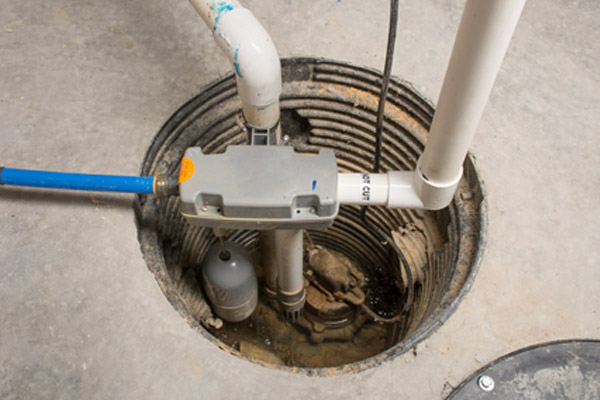Straightforward Tips for Caring for Your Sump Pump
Straightforward Tips for Caring for Your Sump Pump
Blog Article
Are you searching for content about How To Effectively Clean A Sump Pump?

Sump pumps are crucial components in lots of homes, specifically in locations susceptible to flooding or excessive dampness. They assist avoid water damage by successfully getting rid of excess water from cellars or crawl spaces. Nevertheless, like any other home appliance, sump pumps require normal upkeep to ensure they work efficiently when needed the most. Cleansing your sump pump is an essential part of its upkeep, and recognizing exactly how to do it effectively can save you from costly fixings and potential disasters.
Introduction
Maintaining a tidy sump pump is vital for its appropriate functioning and longevity. Neglecting this vital task can result in clogs, breakdowns, and eventually, water damage to your building. Consequently, finding out how to cleanse a sump pump is critical for home owners who count on these devices to keep their basements completely dry and safeguarded.
Signs of a Dirty Sump Pump
Knowing when your sump pump needs cleaning is important for stopping possible breakdowns. Some usual signs that indicate a filthy sump pump consist of strange noises during operation, minimized water circulation, and visible debris in the pit. If you notice any one of these signs, it's important to clean your sump pump without delay to stay clear of any type of more issues.
Preparing for Cleaning
Before you begin cleansing your sump pump, it's vital to take some security preventative measures. Start by turning off the power to the pump to stay clear of any electric accidents. Furthermore, wear ideal protective gear, such as handwear covers and goggles, to shield yourself from dirt, debris, and potential pathogens.
Understanding the Sump Pump
Before diving into the cleaning procedure, it's vital to have a standard understanding of just how a sump pump works. Generally set up in a pit or container below the cellar floor, a sump pump contains a number of essential parts, including a pump, a float button, and a discharge pipe. When water accumulates in the pit, the float button activates the pump, which then pumps the water out with the discharge pipeline, far from the structure's structure.
Detailed Overview to Cleansing a Sump Pump
Shutting Off the Power
Begin by separating the power supply to the sump pump to avoid any crashes while cleaning.
Looking For Correct Functioning
Before reinstalling the pump, do a fast test to make sure that the float switch triggers the pump correctly. Put some water into the sump pit and observe the pump's procedure. If every little thing is operating correctly, you can reassemble the pump and reconnect the power supply.
Getting Rid Of Particles and Dust
Utilize a bucket or a scoop to get rid of any type of noticeable debris, dust, or sediment from the sump pit. Dispose of the particles appropriately to prevent it from clogging the pump or the discharge pipe.
Cleansing the Pump and Float Switch
As soon as the pit is free from particles, thoroughly get rid of the pump from the pit. Examine the pump and the float switch for any kind of signs of damages or wear. Utilize a soft brush or fabric to clean up the surfaces and eliminate any kind of built up gunk.
Flushing the System
After cleaning the pump and float button, flush the sump pit with clean water to get rid of any kind of staying dirt or debris. This will certainly aid make certain that the pump operates efficiently and successfully.
Maintenance Tips to Maintain Your Sump Pump Clean
In addition to periodic cleaning, there are numerous maintenance pointers you can comply with to keep your sump pump in optimum problem:
Final thought
Cleaning your sump pump is an essential facet of its maintenance and guarantees that it runs successfully when you need it one of the most. By complying with the actions laid out in this guide and integrating regular maintenance into your regimen, you can extend the life expectancy of your sump pump and secure your home from water damages.
6 STEPS ON HOW TO CLEAN A SUMP PUMP PROPERLY
UNDERSTANDING SUMP PUMPS
Your sump pump plays a crucial role in protecting your home by managing and removing excess water. It primarily functions as a “shield”, guarding your basement against the damaging effects of water accumulation. The pump is housed in a sump pit in the lowest part of your basement, and its job is to pump out any water that collects there.
During heavy rainfalls or when snow melts rapidly, water can infiltrate your basement, posing potential risks like flooding, structural damage, and harmful mold growth. Here, the sump pump springs into action, pumping out the intruding water and directing it away from your home.
SAFETY FIRST
Before cleaning, remember to prioritize safety. Disconnect the sump pump from the power source to prevent any accidental electric shocks. Also, wear sturdy gloves to protect your hands from any sharp or dirty components within the pump.
REMOVE THE SUMP PUMP
After ensuring your safety, the next step is to remove the sump pump from its pit. Doing this might require careful maneuvering as you don’t want to damage any pump components. Once removed, clean the sump pit to remove any accumulated debris or sludge.
INSPECT THE PUMP
Inspect the pump for any visible signs of wear or damage. Check the power cord, float switch, and impeller housing. If any components look worn out or damaged, consider replacing them to ensure optimal performance.
CLEAN THE PUMP
Thoroughly clean the pump with warm, soapy water. Make sure to rid it of any dirt, gravel, or other debris that might impede its performance. You can use a toothbrush to clean the small, hard-to-reach parts of the pump.
REINSTALL THE SUMP PUMP
Reinstall the pump into the sump pit Make sure it’s positioned correctly to remove the water effectively Once it’s back in place, reconnect it to the power source TEST THE PUMP
Finally, pour some water into the pit to ensure the pump works correctly. It should start automatically and begin pumping out the water; if it doesn’t, check the power source and the positioning of the pump.
Remember, while cleaning your sump pump is an essential part of home maintenance, hiring a professional plumber for a thorough inspection and cleaning at least once a year is also important. This will ensure that your pump is in optimal condition, ready to protect your home from potential water damage.
BEST PRACTICES FOR CLEANING SUMP PUMP DISCHARGE PIPES
Regular Inspection: Regularly inspect your discharge pipes, especially during heavy rainfall or snowmelt periods. Look for any signs of blockage or damage. Early detection of problems can prevent serious issues down the line. Periodic Cleaning: Over time, sediment and debris can accumulate in the discharge pipes, impeding the flow of water. Regular cleaning helps keep the pipes clear and functioning efficiently. You can use a high-pressure water jet to effectively clean the pipes. Insulation During Winter: In colder climates, discharge pipes can freeze, blocking the outflow of water. Protect your discharge pipes from freezing temperatures by insulating them with foam pipe insulation. This will ensure the sump pump can continue to discharge water even in freezing conditions. Proper Positioning: The discharge pipe should be positioned to direct water away from your home’s foundation. Improper positioning can lead to water seeping back into the basement. Ensure the pipe is long enough and angled correctly. Installation of a Check Valve: A check valve prevents water from flowing back into your sump pit after the pump has pushed it out. Installing a check valve helps maintain the efficiency of your sump pump and reduces the risk of flooding. Minimize Pipe Turns: Every curve or turn in the discharge pipe can decrease the efficiency of water flow. By minimizing turns and bends in your discharge pipe, you can increase the efficiency of your sump pump. https://www.fullspeedplumbing.com/how-to-clean-a-sump-pump-properly9999/

I am very excited about Keep Your Sump Pump Clean, It'll Keep You Dry and I'm hoping you enjoyed the entire blog entry. Sharing is nice. Helping others is fun. Thanks for your time invested reading it.
Click Here Report this page